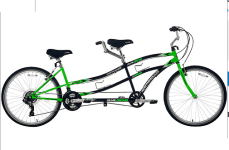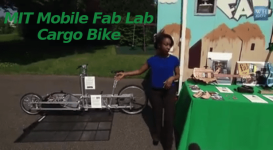Two Toronto twenty-somethings are travelling across North America on a trip fuelled by pedal power and plenty of good will.
Carpenter Paul Myers, 24, and videographer James Hughes, 26, departed on a cross-continent adventure in mid-September aboard human-electric hybrid bikes they constructed. They’re calling their journey the
Tumbleweed Project because “we are just tumbling along and figuring it out as we go.”
Their goal is to explore and showcase eco-communities and innovative forms of living as they pedal from Midland, Ont., to California, crossing through many Canadian provinces and U.S. states. Along the way, they’ve been filming video updates highlighting the sites they’ve seen and the people championing sustainable practices that they’ve encountered.
The three-wheel, steel-framed bikes with wooden seats are steered by a person pedaling them with the assistance of a motor and an electric battery to provide additional power.
Aboard the bikes, Myers say they have visited
Whole Village, a self-sustaining village in Caledon, Ont., with a co-housing residence and farm operating free from pesticides and other chemicals;
Grailville, a spiritual and ecological sustainability community in Ohio, and
Enright Ridge Urban Ecovillage in Cincinnati.
Each location is pioneering a way of living more sustainably in an effort to tackle issues like global warming, climate change, food shortages and landscape degradation. Touring the locations has helped Myers and Hughes notice that the ubiquity of urban sprawl is causing “unnecessary stress on nature and spirit, hindering our progress towards realizing our full potential and moving towards a brighter future.”
....more....
“One person leads to the next,” they say. “We have given up on planning ahead.”
Despite their dedication to “tumble along” without any concrete plans, they suspect it will take another three months and much more money for them to complete their route and find their way home.
In a few days, they intend to stop at
The Farm in Summertown, Tenn. The Farm is a “hippy commune” that developed a sustainable community advocating for “green living” in the late 1960s. Since that time, Myers and Hughes say, the community has been “struggling” with financial difficulties, but they intend to use their video blogs to delve into what happened and why mistakes were made.
Although they are unsure what the rest of the journey has in store for them, they say “we’ve surprised ourselves.”
Myers says, “I wasn’t sure we would make it out of Ontario, but here we are over 1,000 miles in and it’s looking good.”












